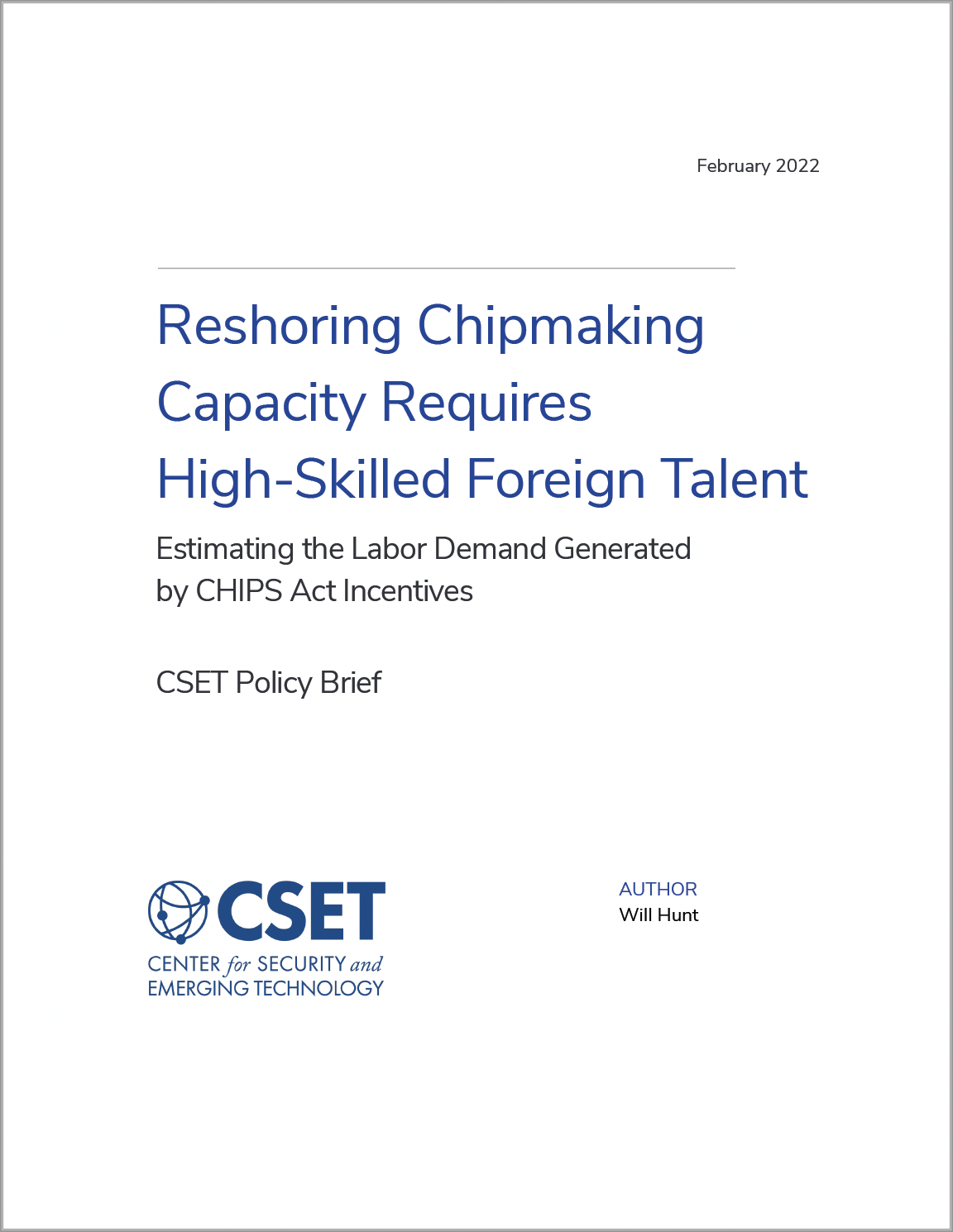Executive Summary
The CHIPS for America Act, which became law at the start of 2021, includes funding to incentivize chipmakers to build new capacity in the United States, reversing the decline in the U.S. share of semiconductor manufacturing capacity. This policy brief estimates the workforce demands that CHIPS Act manufacturing incentives will generate. It also estimates the degree to which the required talent is latent within the existing U.S. workforce, or whether it must be sourced from abroad.
Findings suggest that there may be insufficient semiconductor manufacturing talent latent in the U.S. workforce to meet the labor demand generated by CHIPS Act-funded semiconductor fabrication plants (“fabs”) in the short term. CHIPS Act manufacturing incentives will likely generate tens of thousands of new jobs, thousands of which will likely need to be filled by immigrants. Experienced, high-skilled foreign talent will be especially needed for engineering roles, where this policy brief estimates that employment could grow by 19 percent over the next decade. Lower-skilled roles will see roughly 11 percent employment growth over the same period.
Given the immediate need for experienced foreign talent that will be generated by CHIPS Act incentives, the United States should explore creating specialized visas for high-skilled workers with significant experience in semiconductor manufacturing and engineering. It would be especially valuable to facilitate the immigration of employees of leading-edge chip manufacturers such as TSMC in Taiwan. These workers possess highly valuable tacit engineering know-how that is best transmitted by providing on-the-job training and mentorship to their American coworkers. As a result, companies such as TSMC will likely seek to transfer many of their employees to any new fabs they build in the United States. The success or failure of CHIPS Act incentives may depend in part on these firms’ ability to gain visas for these employees. Allowing Taiwanese semiconductor workers to immigrate to the United States has the added advantage of attracting foreign chipmakers to work in the United States over other countries.
The creation of immigration pathways should be complemented by long-term investments in workforce development to increase the supply of American-born talent in the U.S. semiconductor workforce. Over the long term, investments in workforce development will reduce U.S. dependence on foreign talent and ensure that the demand for engineering jobs generated by CHIPS Act incentives can be met. Options for investment include K-12 STEM education, funded 4+1 programs in semiconductor-related fields, and on-the-job training programs to help graduates acquire the tacit engineering know-how required for many semiconductor manufacturing-related careers.
